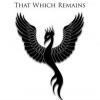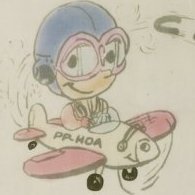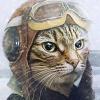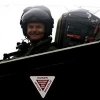-
Posts
1,254 -
Joined
-
Last visited
About Andrew

- Birthday 16/08/1970
Contact Methods
-
Website URL
http://
-
ICQ
0
Profile Information
-
Gender
Male
-
Location
Newcastle, Australia
Recent Profile Visitors
6,437 profile views
Andrew's Achievements

Very Obsessed Member (5/9)
1k
Reputation
-
Hi Rob, Good catch - I took the 'BC' to be overpainted in dark green, as if the jet was leaving the OCU and heading to 12 Sqn, but perhaps it was going in the opposite direction and the 'BC' codes were being applied in stages (to support availability, presumably), with the black portion painted first and the outer white portion applied later over the black? Great anecdote too, Rob! It adds to the overall understanding of what it was like to operate these jets; obviously the fleet was rarely (if ever) at a common standard!
-
To complement @Irish 251's post, here's a similar search of the Air Britain Pic library. I've observed something curious for the period when the OCU's jets were marked in the 'xC' style - specifically the depiction of the code and serial combination on the interior of the airbrakes: the aircraft's individual letter to the left, and the 'last three' of the serial to the right. Examples I noticed were XX895 'BC' (so 'B' to left and '895' to right) and XT283 'GC' ('G' and '283')... here's XT283 in 1985.
-
Andrew started following Hasegawa 1/72 Italian F-104...J??? , Buccaneer tail codes , Modelsvit Mirage III O Squadron 75 and 5 others
-
Thanks so much to all for a wonderful thread - I operate on the principle that any discussion focusing on the Buccaneer is a thing of delight and beauty and this thread is a great example of that. Inspired to go find more images of Buccaneers from 237 OCU, I've discovered another 'BC' - XX895, obviously coded some time after Rob's (@Phone Phixer) information about XV163 as BC. Here's a picture by Phil Bradshaw on Flickr of XX895 in August 1987, but in what I can only assume was a clever ploy by the RAF of the mid-1980s to confuse this little black duck, I've encountered another photo of XX895, but with 12 Sqn markings, as seen in this photo from June 1987 (I have no reason to think that the attributed photo date is incorrect). June? Really? But wait, it gets worse... Check this photo from September 1987 out - the 'BC' codes have been restored! I need a little lie down...
-
Patrice, @Antoine is on the money - my reference (Mirage IIIO Colours and markings, by @Motty and the late Paul Mason) tells me that the Mk. 4 seat was used from delivery until around 1981, from which point the Mk. 6 seat was utilised. Your jet would therefore definitely have had the Mk. 4 seat, which I assume was similar to what the French were using at that time.
-
It's great to see your continuation of this build, David. Thanks for sharing it with us and your work is lovely as always. Good luck with rebuilding the flap attachment.
-

1/72 Fine Molds F-4G 'Robot Phantom' of VF-213
Andrew replied to Andrew's topic in Work in Progress - Aircraft
Apologies for the confusion - I was referring to the incremental improvements they're making with each new variant (rather than release - FM do have a fondness for multiple releases of a particular version, such as the F-4J!) Their initial release, the F-4EJ/EJ Kai, is an excellent kit, but suffers (IMHO) from the two-part (split left/right) fin. This is no longer an issue with the F-4J (and presumably their F-4C and -D releases), as the fin in that kit is just a single piece. The F-4B (and -N) is another step on from this, with the inclusion of separate leading edge flaps for the wings, and separate speedbrakes. I won't complain if FM decide to add this feature to any new thick-wing Phantoms they might happen to release (or revisit previous thick wing variants to include separate speedbrakes)... The F-4N includes two fins I haven't investigated what the modeller would need to do for this, but at least FM have provided the flaps as separate pieces, so your job might be that bit easier. The tabs you mention are (I think) present to assist with placement and alignment of the flaps in the raised position, but I wondered the same thing as you as I was gluing them on! There is no mention of drooped flaps in the FM instructions. I suspect that you'd actually need to remove the tabs and replace them with pieces across the entire span of the inner wing, and thin the inner edge of the flap piece to render it more realistic, at minimum... I also think you'd need to split the flap into inner/outer sections, plus separate the flap on the outer wing panel. -

1/72 Fine Molds F-4G 'Robot Phantom' of VF-213
Andrew replied to Andrew's topic in Work in Progress - Aircraft
But of course, gentlemen! Please do and thanks for joining in. Let me know if you have any questions about the FM kit. I hope that Fine Molds continue to release naval variants (an F-4S, say...) and add to their impressive Phantom family - I'll definitely buy 'em! -
No, I'm not trying to beat Fine Molds to the draw for a Wild Weasel Phantom release (I'm more than happy to wait for one dear Fine Molds folks, by which I mean I'm not patient at all and would be thrilled if you just released it next month, or sooner), but I'm building their new F-4B kit as the basis of a no-stress/less-effort conversion into a little-known naval variant, the F-4G. This designation was given to a handful of F-4B Phantoms which had equipment for automated/hands-off carrier landings installed. They were deployed aboard USS Kitty Hawk with VF-213 in 1965-66 and saw combat over Vietnam. Some were part of an airwing-wide trial that saw them and other types receive camouflage (predominantly green) on their uppersurfaces. My project will not be one of these; instead it will be finished in the standard USN gull grey/white scheme of that era. The markings will be sourced from Cut then Add (CtA) sheet 72-032 in what is my first experience with this manufacturer. I had made considerable progress when I started to document the build, so my apologies for commencing with the cockpit installed, fuselage already joined and lower wings on. I think my only deviation from the kit instructions was to attach the lower wing early, before the intakes. This allowed me to attend to the seam between the upper and lower forward fuselage, not that there was much to address - the Fine Molds way is very nice and fit is generally excellent. Here you can see that the upperwings are ready to be glued. I've separated the ailerons so that I can reattach them later with their characteristic droop, and added some plastic stock to the leading edge for the sake of ensuring completeness of the part - a small amount of contact area was lost in the separation from the rest of the wing. Fine Molds make this job easier than other manufacturers (lookin' at you, Hasegawa) by moulding the ailerons with deeply engraved separations from adjacent areas, and as complete pieces, i.e. not separated into top and bottom halves ... it's almost as if they want to assist modellers to achieve a more realistic finish! Here's the kit as it rests this morning - leading edge flaps, outer wing panels and tail have all been added, with excellent fit all round. Fine Molds has included leading edge flaps as separate pieces in this, their first release of a thin-wing Phantom. They continue to refine and improve their Phantom kits with each release and the way they've approached the thin wing is a good example of this. Last comment for this post - I'm enjoying this Fine Molds kit very much, and I may have started an F-4J to accompany this build (but couldn't possibly comment). I've discovered quickly that these kits are indeed very finely moulded, and prior to attaching the upper wings I spent a good few hours reinstating panel lines on the fuselage that had been lost, even with the minimal sanding this kit requires. I don't mean to make this sound like a criticism, but I do want to ensure that all panel lines are consistent and as uniform as possible prior to priming and painting. I know, I know, I'm turning whingeing into an artform...
- 10 replies
-
- 13
-

-
thanks Ray, and what an enjoyable thread you created with that build! Great result and a wonderful transformation into a fine replica.
-
hi @Ray_W, how did you go with your experimentation? I still can't offer anything beyond my half-baked suggestions above, but it's a great question and I'm keen to know/do more in this arena...
-
Hi @ClaudioN, great question - post-war Lancasters are very interesting and I look forward to Wingleader Books issuing a volume devoted to them! Anyway, based on the b&w photo of SW364 at the bottom of this page (which is from a online offering of the Aircam Aviation Series No. 12 book), I think you could safely say that the codes are a lighter colour than red (cf. with the centre of the adjacent roundel, and the spinners ... well, not so sure about the spinners, but if the sheet designer says red, I'll run with that) - the codes might indeed be Light Slate Grey.
-
It's great to see your work resume on this kit - more power to your elbow.
-
I wanted to, but was worried that you had addressed your rationale in the opening post and I'd just failed to read it thoroughly! Anyway, good explanation and I understand perfectly now. Great start and I'm looking forward to your build.
-
I'm trying something a bit different with the painting of these kits, in that I want to use (water-based) acrylic paints where possible; my usual practice in recent years has been to rely on lacquer paints. So far, the experiment is going well! Here's the Pakistani aircraft with azure blue undersides, paint courtesy of Mission Models and Atom by Mig:- I like to marble primer coats/undercoats before application of a scheme's colours - this is the uppersurfaces of the Pakistani aircraft with suitably chaotic preparation:- Here's the Indian aircraft after application of a metallic finish - the paint used was predominantly Semi-matt Aluminium from Vallejo's Metal Color range, with a few extras like Mission Models' White Aluminium:- And with the masking for the black areas removed:- The painting process has reminded me that I haven't done much with the kits' propellers, partially 'cos I'd decided early on that a prop I made years ago for just such an event would suffice, and so making the other one could just be deferred until later... anyway, it's now later, so here are the bits for a Tempest propeller or two, with @TeeELL's clever propeller cropping jig device. Colours will be applied in the nearish future - the Indian one is silver/aluminium, while the Pakistani one will be either blue or black; I'm not sure without doing more research.
-
It's taken me some time to get the kits ready for paint (as opposed to just my lookee-see primer coat), with the canopies, and undercarriage bays and doors in particular requiring more work before the application of paint. With those steps out of the way, I've laid down some white/light grey where the roundels will be applied (for the sake of backing colour consistency) and painted the walkways a very dark grey before masking. The plane at the rear (nose pointing to the bottom right of shot) will be a Pakistani aircraft with white bands around its nose (unsure why, but I thought it looked cool in the one photo I've seen so far), while the foreground kit will be an Indian Air Force plane in silver and black stripes/patches. I'll have to take some more pictures of the kits as they stand now, but here's the pair before I really got going this morning: Thanks for looking in.



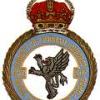


.thumb.jpg.d63052df9f30de247fb49bf44f442289.jpg)
